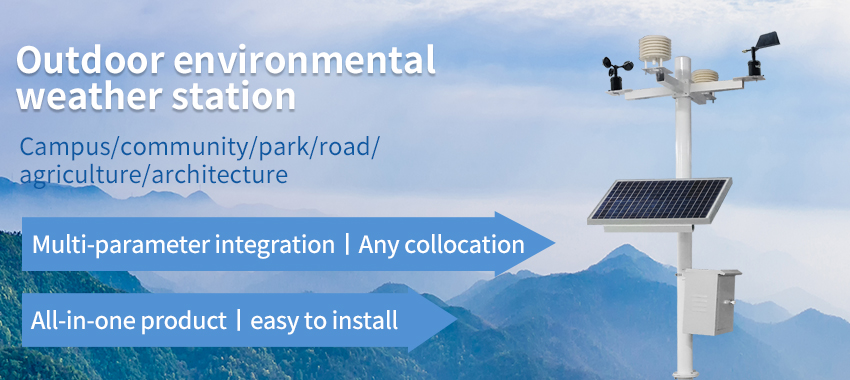Weather monitoring and forecasting are crucial for various sectors, including agriculture, aviation, disaster management, and environmental protection. Automatic weather station (AWS) have revolutionize the way weather data is collected, processed, and utilized. These stations are equipped with advanced sensors and communication technologies, enabling the automated collection of meteorological data and the transmission of real-time information to meteorological agencies, research institutions. This essay explores the role of automatic weather stations in modern weather monitoring and forecasting, highlighting their significance, components, operation.

Significance of Automatic Weather Station
Automatic weather station play a pivotal role in the acquisition of accurate and timely weather data, which forms the foundation for weather forecasting, climate research in industries. These stations have become indispensable tools for meteorological and environmental monitoring, providing essential information on temperature, humidity, wind speed, precipitation. The significance of automatic weather stations can be understood through their contributions to the following areas:

- Weather Forecasting and Prediction:
Portable weather stations contribute to the generation of reliable weather forecasts and predictions by providing real-time meteorological data to meteorological agencies and forecasters. The continuous monitoring of weather parameters enables the identification of weather patterns, trends, and anomalies, supporting the development of accurate short-term and long-term weather forecasts. - Climate Research and Analysis:
The data collected by weather station is instrumental in climate research and analysis, facilitating the study of long-term weather patterns, climate change, and environmental trends. These stations contribute to the generation of historical weather records, which are essential for understanding climate variability and assessing the impact of climate change on ecosystems and human activities. - Agriculture and Crop Management:
Weather station provide vital information for agricultural planning and crop management. Farmers and agricultural professionals rely on weather data, including temperature, precipitation, and humidity, to make informed decisions regarding irrigation, planting, and harvesting. Accurate weather information from automatic weather stations supports sustainable agricultural practices and enhances crop yield predictions. - Aviation and Transportation:
The aviation industry depends on accurate weather data for flight planning, navigation, and safety. Automatic weather stations contribute to the provision of real-time weather information at airports and flight routes, enabling pilots and air traffic controllers to make informed decisions regarding takeoff, landing, and route adjustments based on current weather conditions.
Components and Operation of Automatic Weather Station

Automatic weather stations are equipped with a range of sensors and instruments designed to measure various meteorological parameters. These stations are typically composed of the following key components:
- Sensors for Meteorological Parameters:
Automatic weather stations are with sensors for measuring temperature, humidity, wind speed, wind direction, atmospheric pressure, precipitation, and solar radiation. These sensors utilize advanced technologies, such as thermistors, anemometers, barometers, and rain gauges, to accurately capture meteorological data. - Data Loggers and Processing Units:
Data loggers and processing units are integral components of automatic weather stations, responsible for collecting, storing, and processing meteorological data from the sensors. These units may include microcontrollers, data acquisition systems, and memory storage devices for recording and managing the collecte data. - Communication Systems:
Automatic weather stations are equipped with communication systems that enable the transmission of meteorological data to centralized databases, meteorological agencies. Communication technologies, such as cellular networks, satellite links, and radio transmitters, facilitate the real-time transmission of weather data. - Power Supply and Environmental Protection:
Automatic weather stations require reliable power sources, such as solar panels, batteries, or external power connections, to ensure continuous operation. Additionally, these stations are with protective enclosures and weatherproofing measures to withstand environmental conditions.
The operation of automatic weather stations involves the continuous monitoring of meteorological parameters, data collection, processing, and transmission. Sensors capture real-time weather data, which is then processed and stored by the data loggers. The processed data is transmitted to designated recipients through communication systems, enabling real-time access to weather information for monitoring, analysis.
Impact of Automatic Weather Station on Various Sectors
The deployment of automatic weather stations has had a profound impact on diverse sectors, influencing decision-making, operational efficiency. The following are some of the main sectors in which automatic weather stations operate:

- Agriculture and Agribusiness:
Automatic weather stations have transformed agricultural practices by providing farmers and agribusinesses with accurate and localized weather data. This information supports precision agriculture, optimal irrigation scheduling, and the mitigation of weather-related risks, ultimately enhancing crop productivity. - Disaster Management and Emergency Response:
The real-time weather data provided by automatic weather stations is instrumental in disaster management and emergency response efforts. Timely information on extreme weather events, such as storms, floods, and heatwaves, enables authorities to issue warnings, implement evacuation plans. - Renewable Energy and Power Generation:
The renewable energy sector, including wind and solar power generation, relies on accurate weather data for operational planning. Automatic weather stations contribute to the assessment of wind resources, solar radiation, supporting the efficient integration of renewable energy into the power grid. - Environmental Monitoring and Research:
Automatic weather stations play a critical role in environmental monitoring, providing essential data for climate studies, air quality assessments. These stations contribute to the understanding of local and regional weather patterns, supporting environmental conservation and sustainability initiatives.
Conclusion
Automatic weather stations have transformed weather monitoring and forecasting by providing accurate, real-time meteorological data for diverse applications. With advanced sensors, data processing capabilities and communication technologies, automatic weather stations have become indispensable tools for weather monitoring. To meet the technical challenges of automatic weather stations, stakeholders can strive to improve the reliability of weather information.
